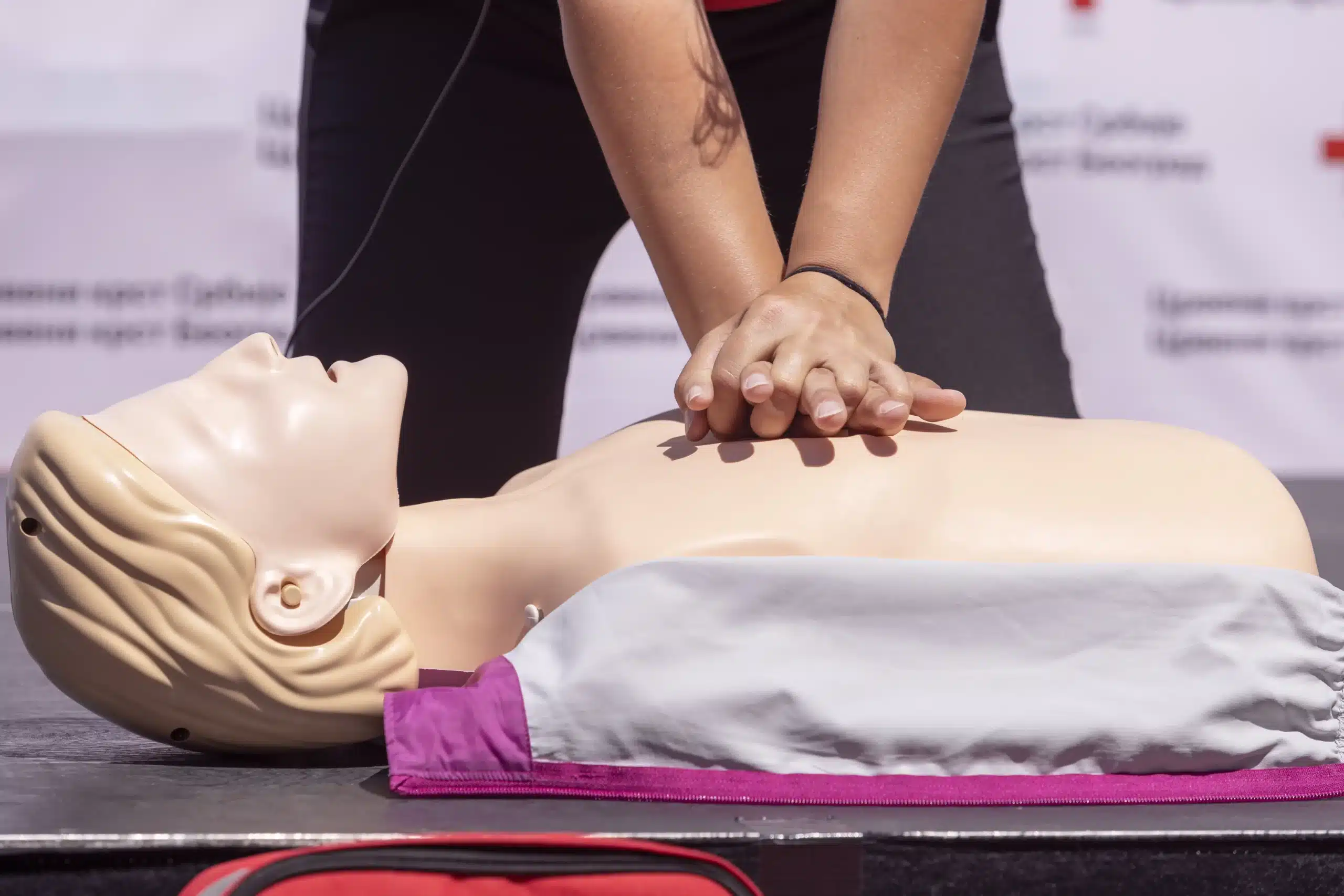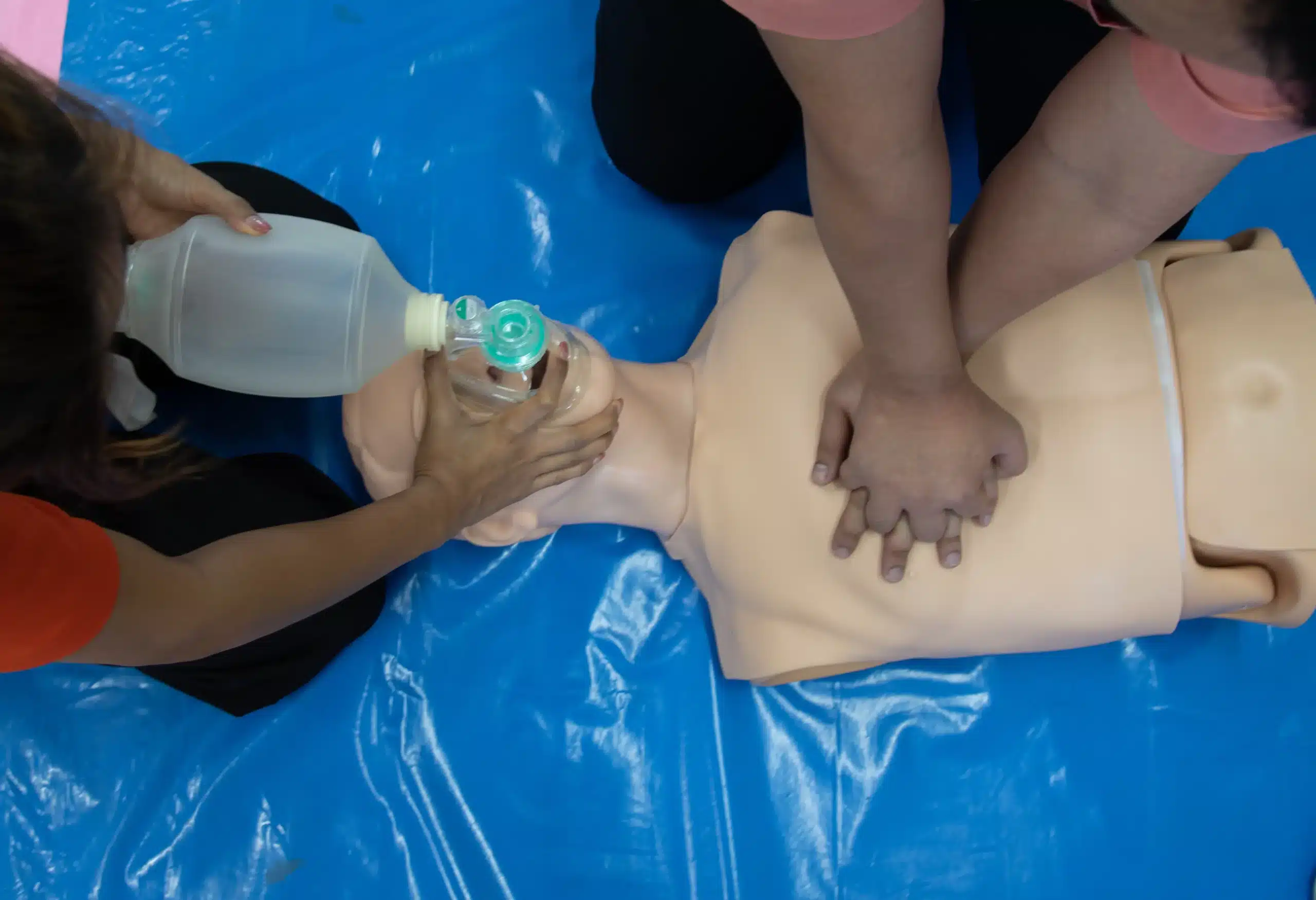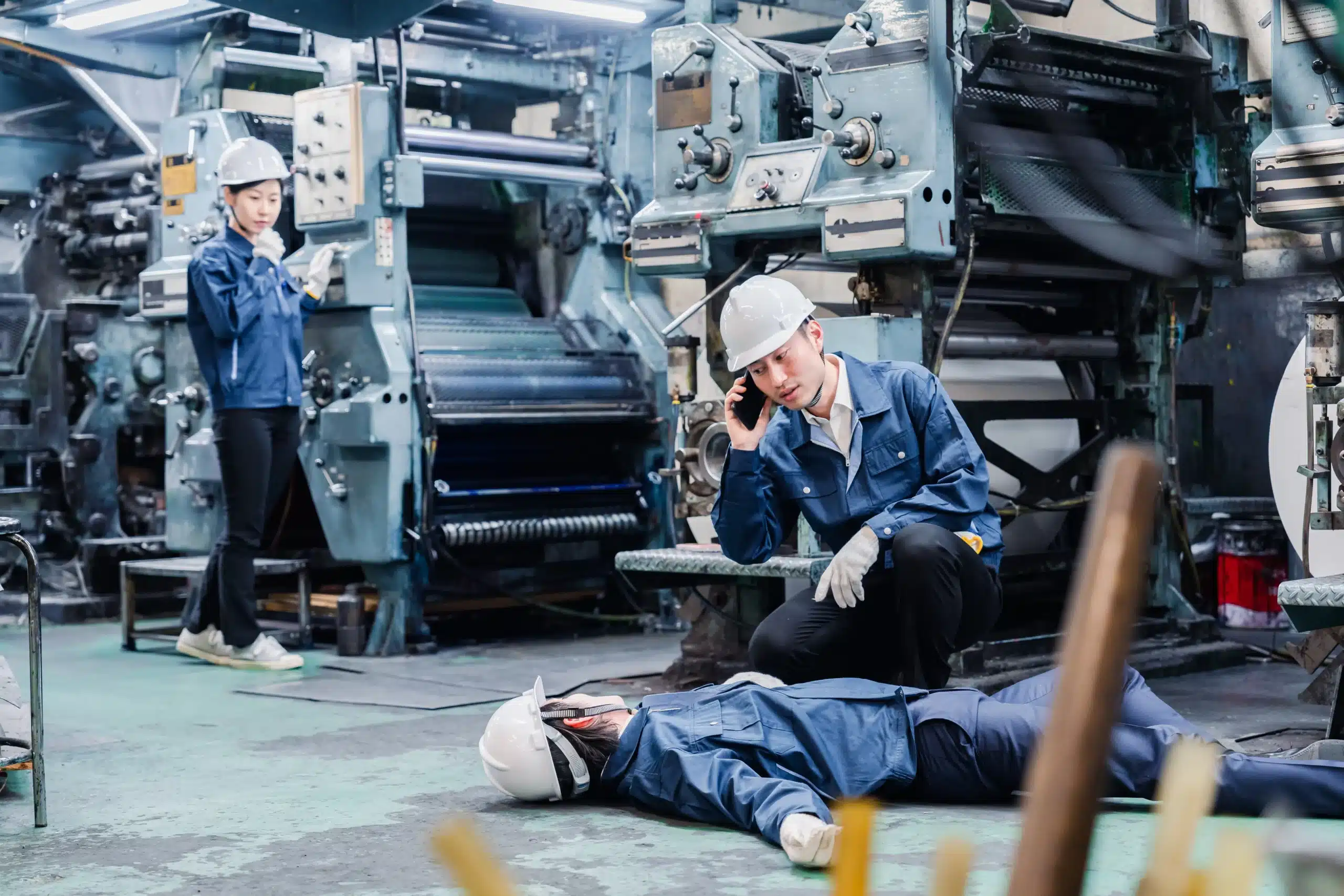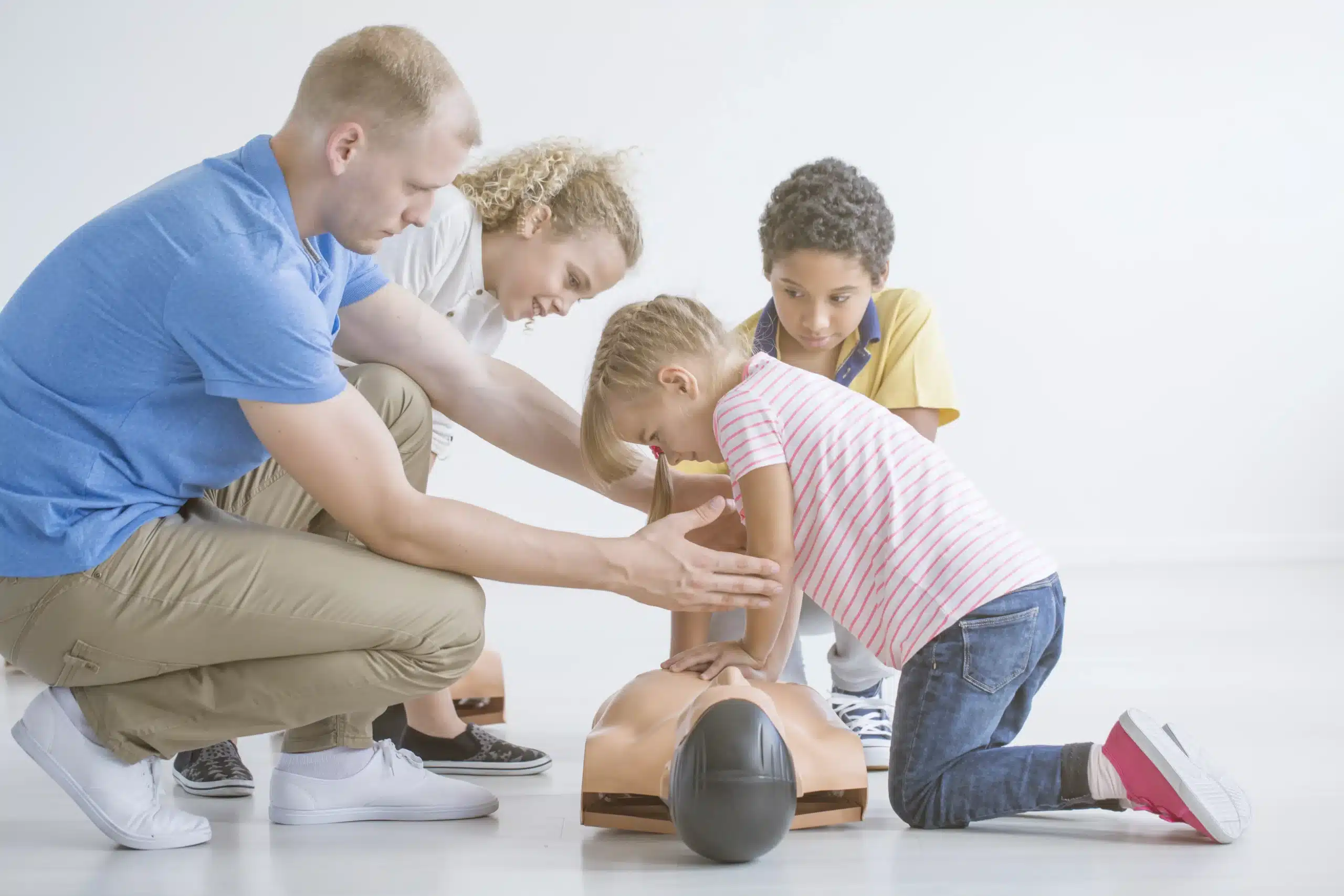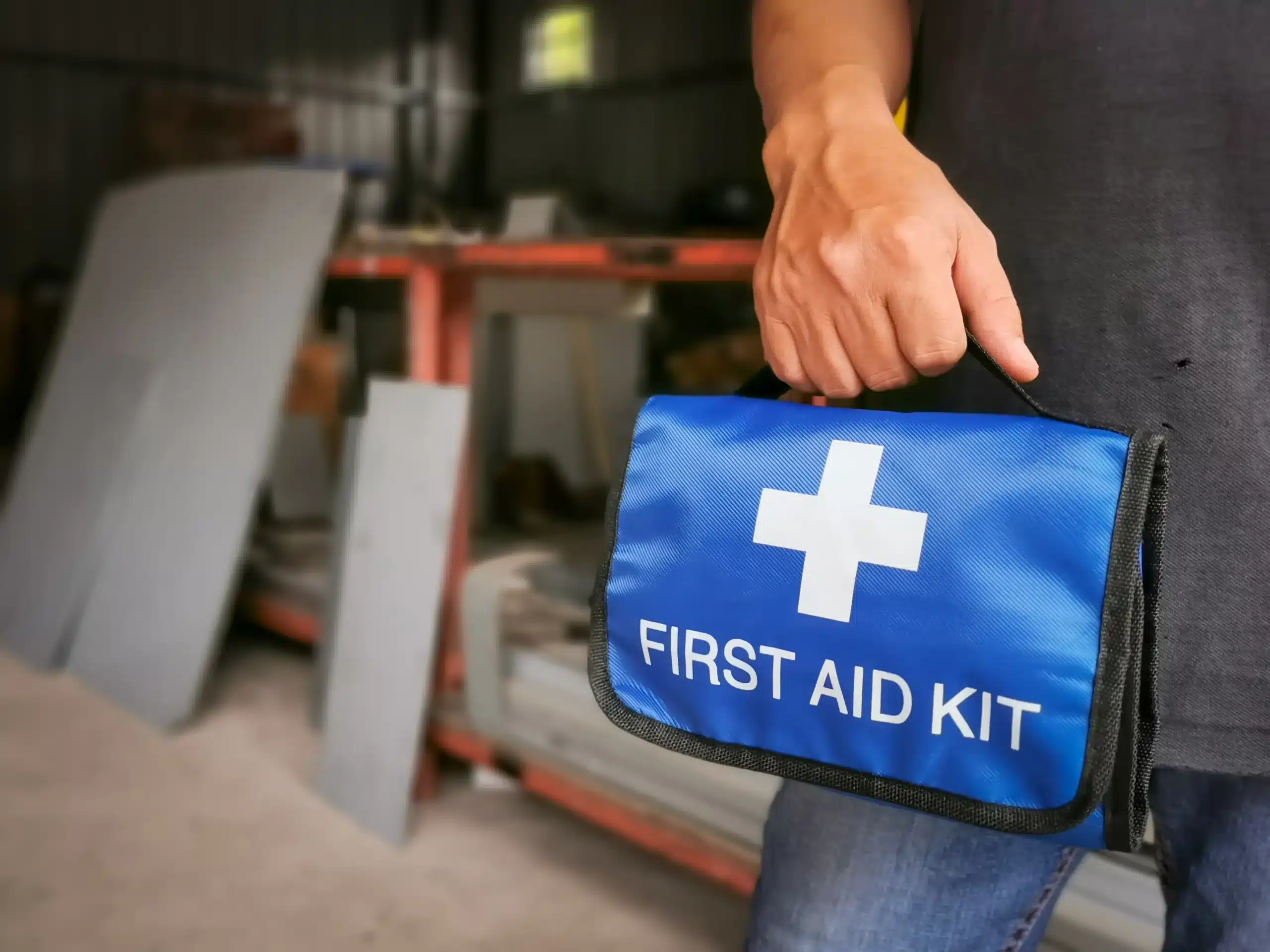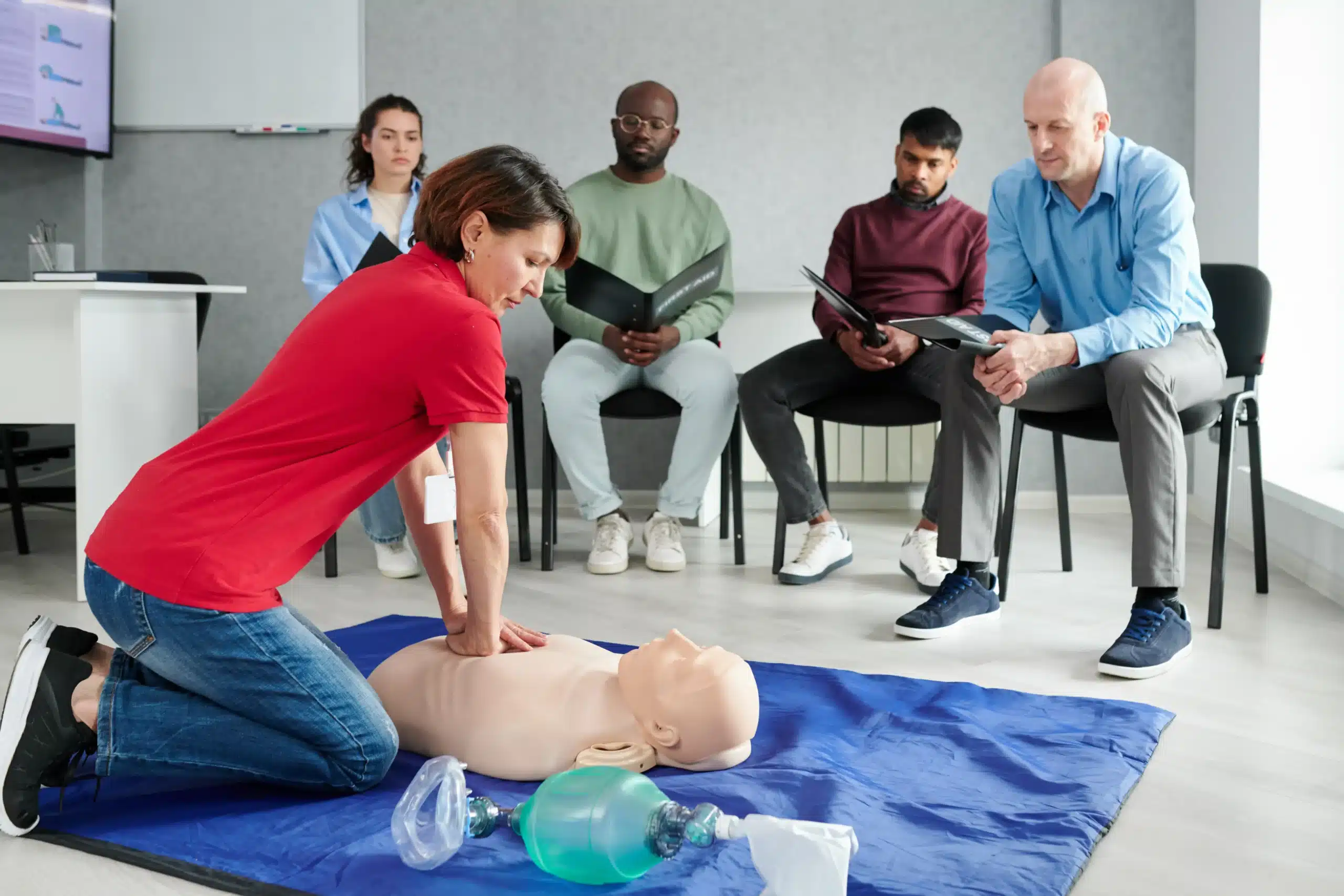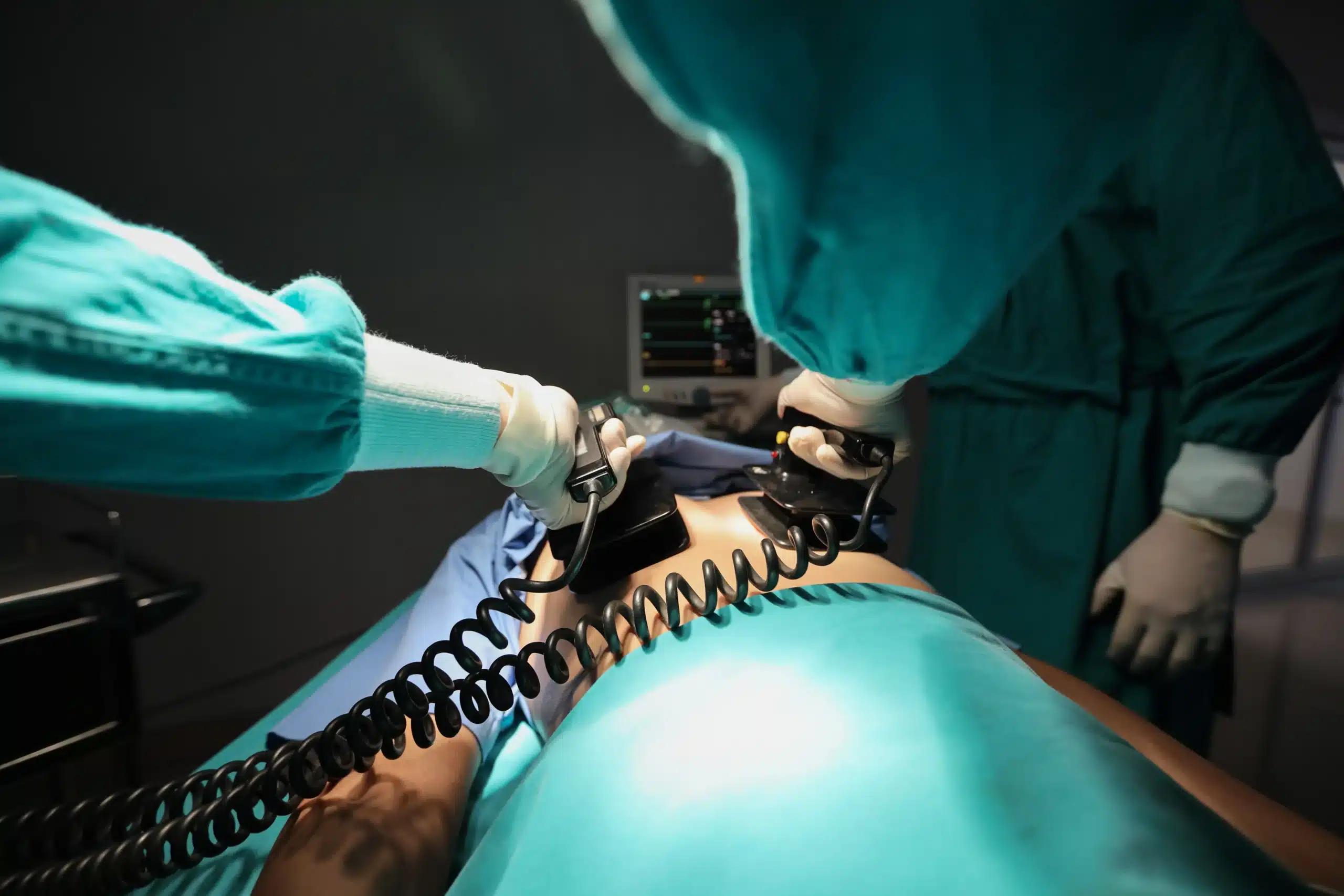Faced with a medical emergency, seconds can matter. BLS training empowers you to act quickly and potentially save a life. But where do you start? This comprehensive guide simplifies everything about BLS training, from understanding its core components to finding the perfect “bls training near me.” We’ll cover who benefits from BLS certification, common misconceptions, and what to expect during training. Whether you’re a healthcare provider seeking recertification or a concerned citizen wanting to learn essential life-saving skills, this guide will help you find the right BLS training program and feel confident in your abilities.
Key Takeaways
- BLS certification empowers anyone to save lives: From healthcare providers to everyday people, the skills learned are valuable in any emergency. Find a course that fits your needs and budget.
- Select a reputable training provider: Ensure your chosen provider offers recognized certification, flexible scheduling, and qualified instructors. Check student reviews for added insight.
- Set yourself up for success: Prepare for your BLS class by reviewing the basics, dressing comfortably, and bringing a notebook. Active participation is key to mastering these essential skills.
What is BLS Training and Why Do You Need It?
BLS stands for Basic Life Support. It’s a critical set of skills needed to respond to life-threatening emergencies like cardiac arrest, choking, and respiratory distress. BLS training equips you with the knowledge and confidence to act quickly and potentially save a life. It’s about more than just CPR—it’s a comprehensive approach to emergency care.
Key BLS Skills
BLS training covers essential skills, including high-quality CPR for adults, children, and infants, and how to use an AED (automated external defibrillator). The training also covers basic airway management techniques like using a bag-valve mask and how to help someone who is choking. These skills are applicable anywhere, from a hospital to a home or workplace. Learn more on our BLS certification page.
Who Should Get BLS Certified?
While BLS certification is often required for healthcare professionals, it’s valuable for anyone. Emergencies can happen anytime, anywhere. Being BLS certified means you’re prepared to assist family, friends, coworkers, or even strangers in a critical situation. Community members trained in BLS can make a real difference while waiting for first responders.
Common BLS Myths Debunked
There are a few common misconceptions about BLS training. One is that it’s only for medical professionals—not true! Anyone can benefit from BLS training. Another myth is that certification lasts forever. BLS certification needs to be renewed, typically every two years, to keep your skills current. Don’t let these myths prevent you from gaining this life-saving knowledge.
Find BLS Training Near You
Finding the right BLS training program can feel a little overwhelming with so many options available. To simplify your search, I’ve broken down some of the most common places to find BLS certification courses.
Safety Training Seminars (Sunnyvale CPR Classes)
If you’re in Sunnyvale, Santa Clara, or San Jose, California, Safety Training Seminars (also known as Sunnyvale CPR Classes) is a convenient option for BLS certification. As a woman-owned American Heart Association Training Center, they offer a range of AHA courses, including BLS, ACLS, PALS, CPR, and First Aid. They’re committed to providing high-quality, affordable training, and their certifications are valid for two years. They even offer discounts for group classes.
American Red Cross
The American Red Cross is another well-known provider of BLS training. They offer courses nationwide, designed for healthcare providers and first responders. You can easily find a BLS course near you through their website, which allows you to search by location and often includes blended learning options that combine online coursework with in-person skills sessions.
American Heart Association
While the AHA doesn’t directly teach courses, they set the standards for CPR and BLS training. Many organizations, like Safety Training Seminars mentioned above, are certified AHA Training Centers. This means they adhere to the AHA’s guidelines and provide AHA-certified training. Look for training centers in your area offering AHA-aligned courses.
Local Hospitals and Medical Centers
Many hospitals and medical centers offer BLS training courses, often geared towards their own staff but sometimes open to the public. These courses are typically high-quality and taught by experienced medical professionals. Check with hospitals and medical centers in your area to see what courses they offer.
Community Colleges
Community colleges frequently offer BLS certification as part of their continuing education programs. These courses are often more affordable than those offered by private training centers and can be a good option if you prefer a more structured learning environment. Check with your local community colleges to see what’s available.
Compare BLS Training Options
Finding the right BLS training involves understanding the various options and choosing the best fit for your needs. Let’s break down the key factors to compare when selecting a BLS course.
In-Person, Online, or Hybrid?
BLS training comes in several formats. Many organizations offer blended learning CPR courses that combine online learning with in-person skills practice. This hybrid approach lets you study the material at your own pace, then demonstrate your skills in a hands-on session. Safety Training Seminars offers this combination of online learning and in-person skills sessions, allowing you to find a format that fits your schedule. Purely online courses may be available, but remember that BLS certification requires demonstrating skills proficiency in person.
Course Length and Certification Validity
BLS courses vary in length, depending on the provider and format. A typical in-person BLS course can be completed in a single day. Blended learning courses may have a shorter in-person component. Regardless of format, your BLS certification card from a reputable provider like Safety Training Seminars is typically valid for two years. This aligns with industry standards and ensures your skills are current.
Cost and Discounts
BLS classes in Sunnyvale usually cost around $120, which includes training materials, skills testing, and your two-year certification card. Be wary of providers with unusually low prices, as they may not meet quality standards. Safety Training Seminars offers a low-price guarantee for its BLS certification courses in Santa Clara County, ensuring you receive high-quality training at a competitive price. Look for discounts, especially for renewals. Many training providers offer group discounts, making it easier to stay current.
Course Content and Quality
A high-quality BLS course covers essential life-saving skills, including CPR, AED use, and how to relieve choking. The curriculum should adhere to the latest guidelines from organizations like the American Heart Association (AHA) and follow OSHA, ILCOR, and ECC standards. Ensure the course content aligns with nationally or internationally accepted standards. This ensures your training is recognized and respected wherever you work or volunteer. BLS training provides essential skills applicable in any emergency.
Choose the Right BLS Provider
Finding the right BLS training provider is crucial for a valuable learning experience. Here’s what to consider when making your decision:
Recognized Certification
First things first, ensure the provider offers courses compliant with nationally recognized organizations like OSHA, ILCOR, and the ECC. This guarantees your BLS certification will be widely accepted. Sunnyvale CPR Classes, for example, offers American Heart Association-compliant courses that meet these standards. A recognized certification ensures your training aligns with established guidelines and best practices.
Flexible Scheduling
Life gets busy, so finding a course that fits your schedule is essential. Look for providers offering various course formats. Many organizations now offer blended learning CPR courses that combine online learning with in-person skills practice. This allows you to complete the coursework at your own pace before attending a hands-on session. Traditional in-person CPR renewal classes offer valuable hands-on training, further strengthening your skills.
Qualified Instructors
The quality of your training depends heavily on the instructor. Choose a provider with experienced, certified instructors who can effectively teach the material and answer your questions. Safety Training Seminars, a woman-owned American Heart Association Training Center, offers various AHA courses, including BLS, ACLS, PALS, CPR, and First Aid, ensuring high-quality instruction. Experienced instructors create a supportive learning environment and provide personalized guidance.
Student Reviews
Before committing to a course, check out reviews from past students. These reviews offer valuable insights into the quality of instruction, course materials, and overall learning experience. Also, look for providers, like Sunnyvale CPR Classes, who offer discounts on BLS renewals, making it easier to stay current with your certification. Finding discounted renewal courses demonstrates a commitment to student affordability and ongoing training.
Prepare for Your BLS Training
So, you’ve decided to get your BLS certification—great choice! Knowing what to expect can help you feel confident and prepared. This section covers everything from what happens in the classroom to how to set yourself up for success.
What to Expect
BLS certification empowers you to save lives, whether you’re a healthcare professional or someone who wants to be prepared for emergencies. Your BLS training will equip you with essential life-saving skills applicable in various situations. Expect a combination of interactive lectures, demonstrations, and hands-on practice. You’ll learn how to perform CPR, use an AED, and provide rescue breaths. BLS classes in Sunnyvale typically cost around $120, which covers your training materials, skills testing, and a two-year certification card. Many organizations, including Safety Training Seminars, offer blended learning CPR courses that combine online coursework with in-person skills practice. This flexible format lets you learn the material at your own pace before demonstrating your skills in a practical setting. You can find more information about our BLS classes here.
What to Bring
When you head to your BLS class, remember to bring a few essentials. While your course fee covers the training materials, it’s a good idea to bring a notebook and pen to jot down notes and questions. Dress comfortably, as you’ll be actively participating in demonstrations and practice sessions. Since Safety Training Seminars offers a low-price guarantee for BLS certification courses in Santa Clara County, you can rest assured you’re getting quality training at an affordable price. Our focus is on providing high-quality, low-cost training to make getting certified accessible to everyone.
Tips for Success
One of the best ways to prepare for your BLS training is to familiarize yourself with the basic concepts beforehand. Reviewing CPR guidelines and AED protocols can give you a head start. Don’t hesitate to ask questions during the class—your instructor is there to help you succeed. Active participation is key. The more you engage in the hands-on practice, the more confident you’ll become in your skills. Finally, remember that BLS certification isn’t just about checking a box; it’s about empowering yourself to make a difference in a critical situation. Dispelling common misconceptions about BLS will help you understand its importance and retain the information. Clarifying these myths is especially important for healthcare providers looking to refine their skills.
Related Articles
- BLS Certification in San Jose: The Ultimate Guide – Sunnyvale CPR Classes
- BLS Certification Sunnyvale: Your Comprehensive Guide – Sunnyvale CPR Classes
- BLS Classes Near Me: Your Complete Guide – Sunnyvale CPR Classes
- BLS Courses in San Jose: Your Complete Guide – Sunnyvale CPR Classes
- BLS Renewal in Santa Clara: Find Courses & Compare Costs – Sunnyvale CPR Classes
Frequently Asked Questions
Is BLS certification only for healthcare professionals? Not at all! While often required for healthcare providers, BLS certification is beneficial for anyone. Knowing these skills can help you respond effectively to emergencies at home, work, or in your community. It empowers you to assist family, friends, coworkers, or even strangers until professional help arrives.
How long does BLS certification last, and how do I renew it? BLS certification is typically valid for two years. Renewal involves taking another BLS course to refresh your skills and stay up-to-date with the latest guidelines. Many providers offer discounted renewal courses, so check with your original training center or other providers in your area.
What if I’m nervous about the skills testing portion of the course? It’s completely normal to feel a little apprehensive about the skills test. Remember, the instructors are there to guide you and ensure you feel comfortable performing the techniques. The emphasis is on learning and practicing, so don’t hesitate to ask questions or request additional guidance. The more you practice, the more confident you’ll become.
What’s the difference between BLS and CPR certification? BLS (Basic Life Support) is more comprehensive than CPR (Cardiopulmonary Resuscitation). BLS training includes CPR but also covers other essential skills like using an AED, relieving choking, and basic airway management. It provides a broader approach to emergency care beyond just chest compressions and rescue breaths.
How can I find a reputable BLS training provider near me? Start by checking with nationally recognized organizations like the American Red Cross and the American Heart Association for certified training centers in your area. Also, look into local hospitals, medical centers, and community colleges, as they often offer BLS courses. Reading online reviews and comparing course content, cost, and scheduling options can help you find the best fit for your needs.
